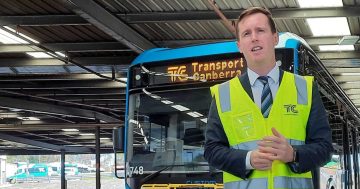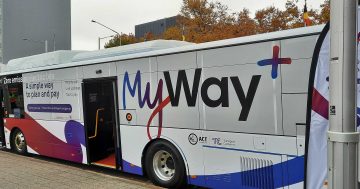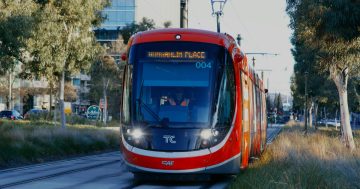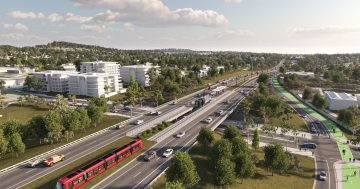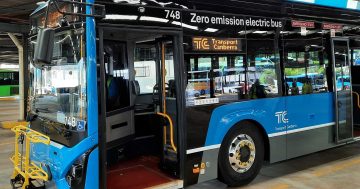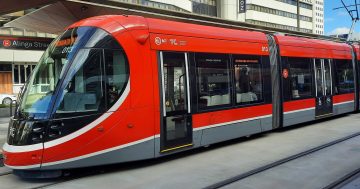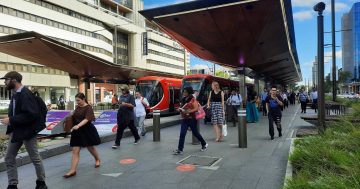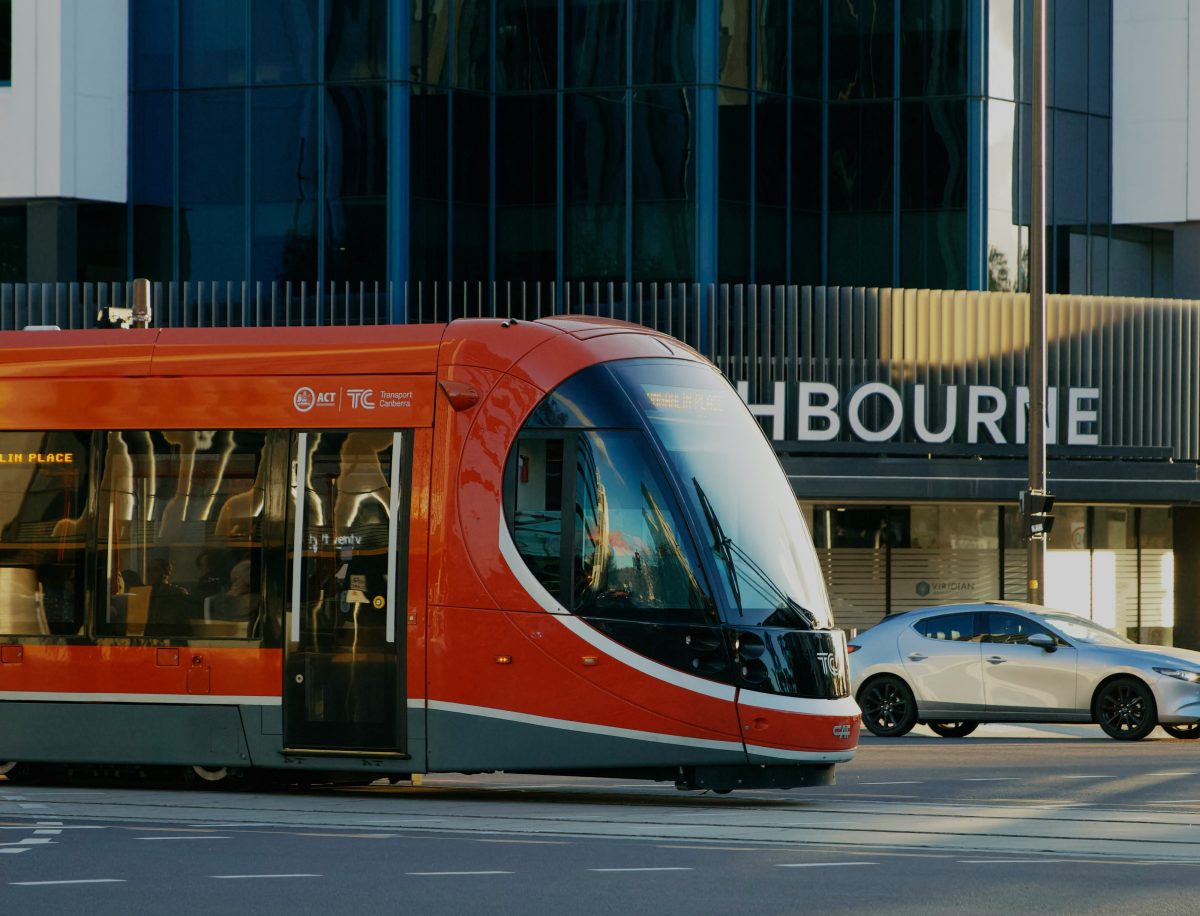
We are now so far down the light rail path that there is nothing to be gained by opposing its extension now. Photo: Jack McCracken.
Light rail has been a frustrating and conflicting issue for Canberrans like me who support environmentally friendly public transport but don’t think it is a solution that will provide effective transport options for the majority of Canberrans.
From the very early days of construction on stage 1 of the light rail, I found myself in the politically confusing situation of agreeing with the Canberra Liberals on a policy position, something that has pretty much never happened to me before.
Their focus on improving Canberra’s bus services and developing an electric bus fleet over the costly and inaccessible light rail aligns with my view that Canberra’s design is better suited to buses and that the rollout of the light rail has increased inequality across our city.
But almost a decade later, with the Federal Government announcing a $50 million injection of funds to the stage 2 development of the light rail, it’s time that we all just get on board (pardon the pun).
It’s true that to extend the light rail network to Woden, and eventually beyond, is going to be a costly, time-consuming process, and is unlikely to yield true benefits to Canberrans for some years yet. It’s also true that the government’s approach to the bus network has left many of us without accessible, fast and frequent services, and failed to provide a true incentive for more Canberrans to choose public transport over their cars.
But it is equally true that we are now so far down the light rail path that there is nothing to be gained by opposing its extension now.
I agree with almost all of the Canberra Liberals’ transport policy until I reach the pledge to cease all work on stage 2 of the light rail. It would be an immense waste of existing investment to stall further progress on the light rail now. It’s here, it’s functioning, and the best outcome at this point is for the network to be extended to reach more Canberrans.
Do I want to also see increased investment in our bus network? Of course.
The reality is that most Canberrans using public transport use buses far more than the light rail. It is functionally impossible for most of us to access the light rail without first having to drive or catch a bus to a stop. And the stage 2 construction process is still in the early stages. Buses are fundamentally important to our public transport system, and we need more of them, with better timetables and routes, to really support Canberrans’ use of public transport over cars.
But, as much as I don’t think it should have been constructed in the first place, I now feel that the only way forward is to focus on extending the light rail network to truly service our city to the fullest extent possible.
It’s officially time to call time on the light rail debate and pull together to make the best of what has already been developed.













